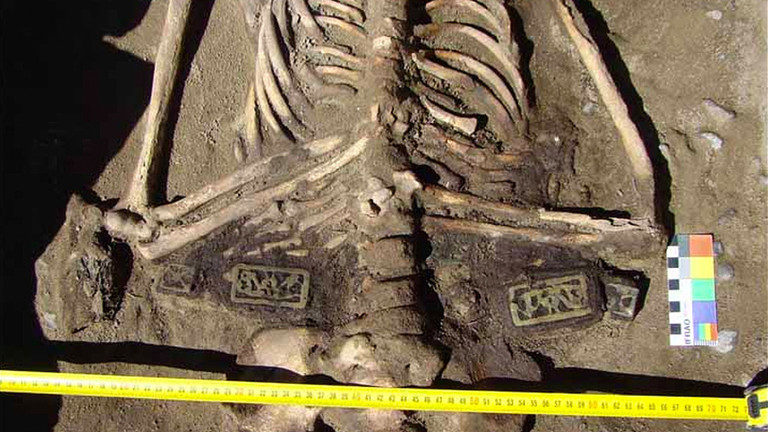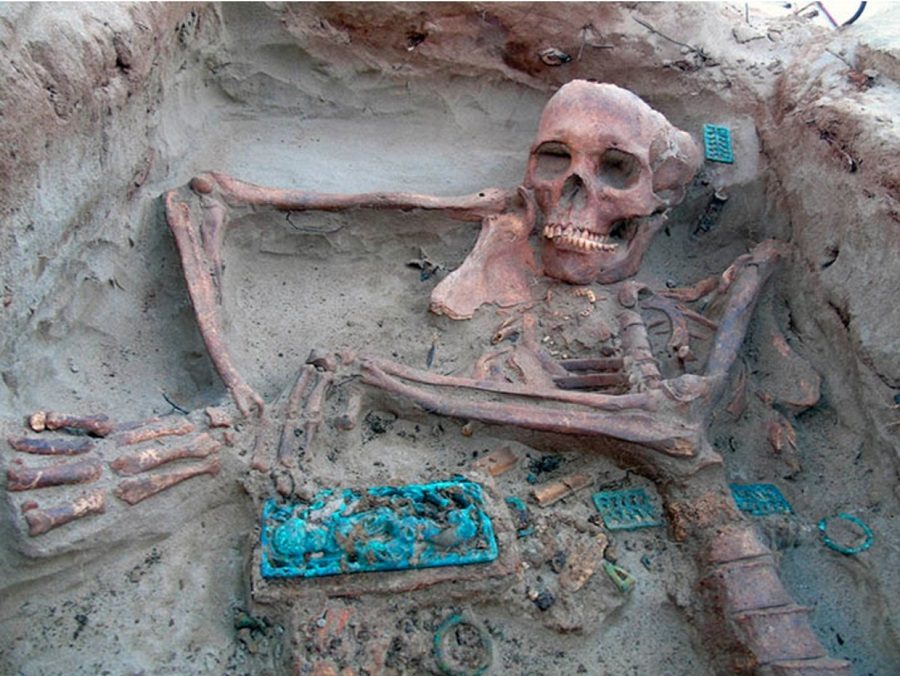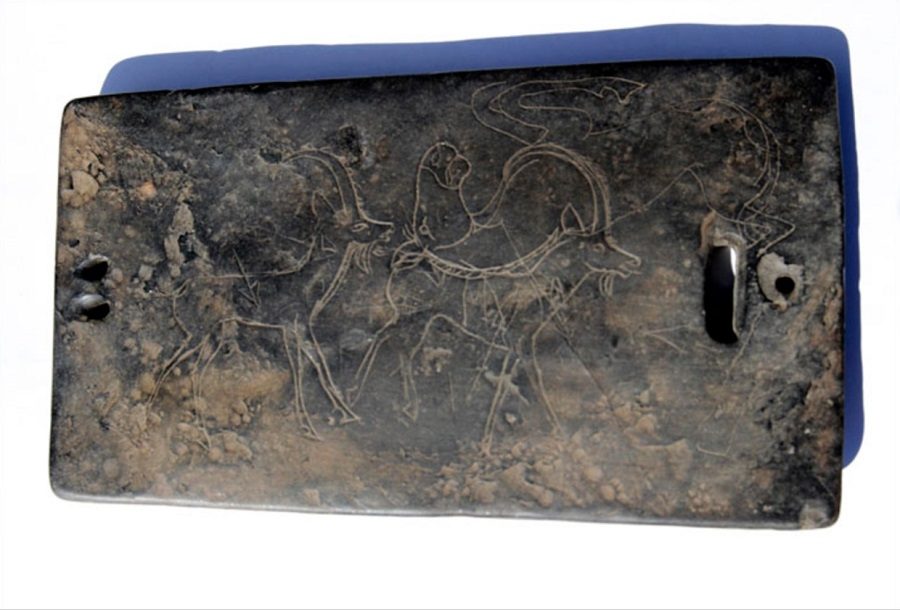RTTue, 25 Jun 2019 17:55 UTC

© RGO
Relics from not one, but two ancient peoples have emerged from the depths at a site dubbed the 'Siberian Atlantis.' The race is on to unearth as many artifacts as possible before the 50ft (15m) waters consume the site once more.
Treasures from two civilizations dating from the Bronze Age to the era of Genghis Khan were uncovered as the waters receded at a 240-square-mile site in the Tuva Republic in southern Siberia, the Siberian Times reports.

© RGO
Some 110 burial sites appeared on an island in the reservoir at Ala-Tey, as well as at a nearby site at Terezin, which boasts at least 32 graves.
Archaeologists have until the beginning of July to recover as much as possible from the 'Siberian Atlanteans' before the site disappears for another year, beneath the frozen waters.Ancient human remains and a wealth of extraordinary artifacts, including jewel-encrusted coal ornaments and decorations that were discovered at the site where the Siberian '
sleeping beauty' was uncovered last year.

© RGO
Jewelry and adornments belonging to the nomadic Xiongnu warrior people, replete with scenes of tigers fighting dragons, as well as beautifully crafted bronze bulls, horses, and snakes, were also uncovered along the bank of the so-called Sayan Sea. The site is a giant reservoir near Sayano-Shushenskaya Dam, Russia's biggest power plant.
He also researched the proverbial Mammoths with buttercups in bellies/mouth, and the later? more specified/denominated Younger Dryas boundary, and how he, V. felt it was likely that huge surface areas of the earth's plates would have, in a hugely short time, moved from temperate to frozen arctic conditions. This would explain the islands of bone and flash frozen flesh etc.
While Velikovsky was speaking of large tracts of Earth’s surface moving due to a close passage of Venus and or Mars, he also felt there should have been also trails of meteors of various sizes also hitting the earth at or near those times.
Thus, even if V. was right with his plate movement theories, it doesn’t mean that the bolide impact theories of the Younger Dryas and Carolina Bays event(s?) (e.g., micrometeorite spherules in Mammoth Tusks) could not likewise have been happing.
A ‘hard rain’ would have truly been falling. Couldn’t have been much fun - though very scary.
R.C.